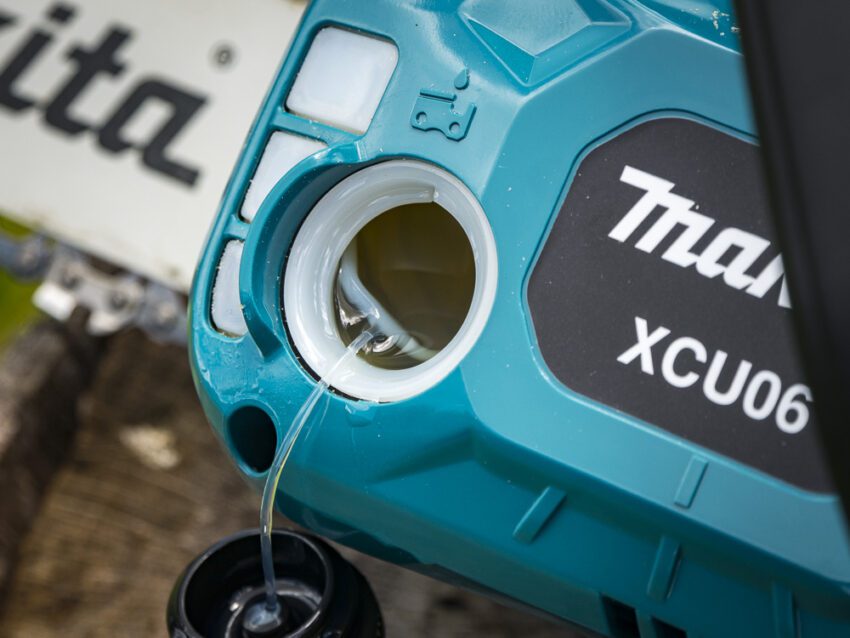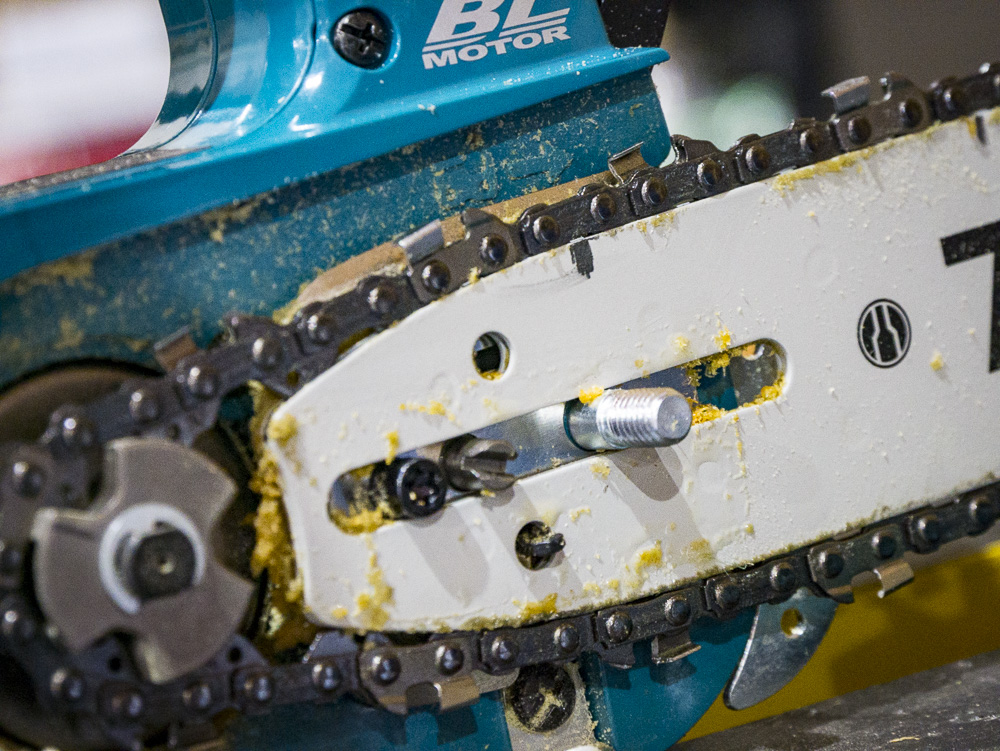We’ve been talking a whole lot about chainsaws around here lately, and it doesn’t look like today’s the day where we’re gonna stop. No sir, today’s all about chainsaw maintenance. Chances are, after you’ve dropped a couple of hundred bucks on a new chainsaw, you’ll probably want to take care of it. Here’s a list of things, in no particular order, that you can do to keep your saw running in tip-top condition for years to come.
For product recommendations, see our Best Chainsaws Buying Guide.
Table of Contents
- #1 Chainsaw Maintenance Tip – Sharpen Your Chain
- #2 Maintain Your Bar Oiler and Levels
- #3 Chainsaw Maintenance Tip – Chain Tensioning
- #4 Check and Replace the Fuel and Oil Filters
- #5 Check the Spark Plug
- #6 Good Chainsaw Maintenance Doesn’t Forget the Air Filter
- #7 Verify Your Chain Brake Works
- Bonus: Drain the Fuel if You Don’t Need to Use the Saw for a While
#1 Chainsaw Maintenance Tip – Sharpen Your Chain

It might be best to start with this step, because the vast majority of chainsaw maintenance tips will need to be accomplished with the chain off anyway. As long as you’ve got your saw opened up, you might as well give the chain a once-over with the file.
If your chain’s starting to look pretty raggedy, you might skip the whole sharpening step and just replace the chain altogether.
As long as you’ve got your chain off for sharpening, you should consider flipping the bar upside down. It will extend the life of your guide bar considerably. Perhaps your bar is past any sort of resurrection though? Here’s how to tell.
#2 Maintain Your Bar Oiler and Levels
If your bar oiler is working properly, it ought to be distributing bar oil every time you squeeze the throttle. Other variables will affect oil flow as well, like warmer and colder temperatures. In any case, oil is essential to how your chainsaw functions, and it’s something you ought to take great pains to keep up with. Thankfully, most newer chainsaws include transparent windows into the oil tank, so this bit of chainsaw maintenance is pretty simple. When it’s low, top it off.


But, as long as you have the chain off, you might as well take a look at the bar oil port. Is it clogged with oil and wood? You’ll want to clean that out so that oil can flow freely onto your chainsaw bar. It would also be a good idea to give the sprockets in the nose of the bar a shot of grease too.


#3 Chainsaw Maintenance Tip – Chain Tensioning
Don’t be a slacker! Your chain will loosen over time, so it’s a good idea to check the tension pretty often. A properly tensioned chain should have a little bit of slack on the bottom, but not so much that you can pull the drive links away from the guide bar; the drive links should always be engaged with the chainsaw bar.
Be careful not to overtighten; an overtightened chain runs the risk of breaking during operation. You should always have a little bit of play in the chain when working.

When storing the chainsaw away for any length of time, it’s a good idea to loosen the chain tension. Cleaning the whole saw from debris and oil is a good idea before storing it away, as well.
#4 Check and Replace the Fuel and Oil Filters
Use ethanol-free gas whenever possible. Ethanol is terrible for small engines. We get it, though. SOme of you are going to run regular unleaded gas in your tools simply due to the convenience. In this case, please be sure to periodically check and replace your fuel and oil filters.

All gas-powered chainsaws include a fuel filter. Most live at the end of a tube within your gas tank. Part of consistent chainsaw maintenance ensures this filter doesn’t become clogged with dust. If it does, it can make the engine hard to start and run roughly. To remove and replace the filter, simply fish out that tub using a coat hanger or similar wire with a tip bent in the shape of a hook. The copper ground wire from a piece of Romex works perfectly for this if you switched to plastic coat hangers!
Once you fish out that tube, remove the fuel filter from the end of the tube. Then, cut off the very end of the tube (about 1/4-inch) to remove the portion that may be permanently widened or even damaged. Lastly, go ahead and insert the new filter into the hose.
Similarly to the fuel filter, repeat the same process for the oil filter located inside the bar lubricating tank. You can often clean this filter using gasoline. If necessary, go ahead and replace it.
#5 Check the Spark Plug
Additionally, before you pack things away for any length of time, it’s a good practice to get into to check your spark plug. Measure the gap using a spark plug gap tool . Then give the plug a good cleaning so that it can produce those combustion-generating sparks that will fire up your chainsaw the next time you need it.
#6 Good Chainsaw Maintenance Doesn’t Forget the Air Filter
More and more, manufacturers make it easier to check and replace the air filters in chainsaws. As a chainsaw maintenance tip, replacing an air filter could mean the difference between making the cut or stalling the tool. Chainsaws need good airflow to work properly. Not having enough air stresses the motor and causes the chainsaw to run at a much higher temperature. That can cause premature wear or even failure on the engine.

Find the air filter and replace it as needed. If you tend to work in dirtier environments, you may need to do this once per season or more.
#7 Verify Your Chain Brake Works
We actually check this quite often as it represents one of the fundamental safety features in a chainsaw. Your chain brake keeps kickback from ruining your day. Before you gun the chainsaw all the way, check that the chain break effectively stops the chain from moving when it engages.

Set the chainsaw down on a table or the ground and release the chain brake (push it forward). Start the saw and squeeze the throttle to start the chain moving. Ensuring your left hand is securely gripping the top handle at all times, push your wrist forward to activate the chain brake. At no time should your hand or arm ever come anywhere near the spinning chain. Your hand should never let go of its grip.
The brake should immediately stop the chain. It the action I slow or the chain doesn’t stop, take the chainsaw to a dealer for repair or consult your user manual.
Bonus: Drain the Fuel if You Don’t Need to Use the Saw for a While
Also, if you don’t have any plans to run your chainsaw for a few weeks, the best chainsaw maintenance tip we can give you is to run it dry before you put it away. Otherwise, you run the risk of your old fuel gumming up the engine on your chainsaw. See our tips on how to winterize your equipment for more information.
If you have any other tips for chainsaw maintenance, feel free to add them to the comments section below!


